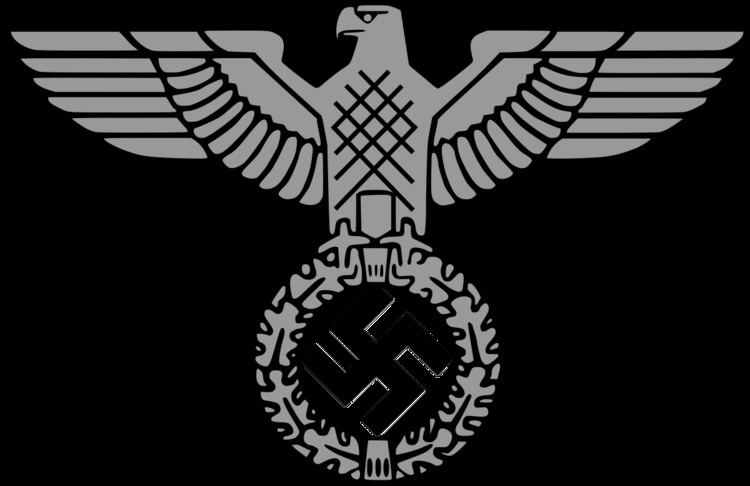Active 1935 – 1945 Identificationsymbol Swastika | Decorations See the full list | |
 | ||
During World War II, Nazi Germany created military-led regimes in occupied territories which were known as a Military administration/ Military administration authority . These differed from Reichskommissariate which were led by Nazi Party officials. A Military administration was normally led by a "military commander" (Militärbefehlshaber, official acronym MilBfh.).
Contents
Ranks
Officials of the Military administration, regardless serving in the Wehrmacht, war economy, military education facilities, or in the military-led regimes in occupied territories, etc., wore military rank insignias similar to these of the Wehrmacht, characterised by the main corps colour (de: Hauptfarbe) dark-green, and various secondary colours (de: Nebenfarben) as well.
The ranks and rank insignias of the Military administration were as follows.
- General-senior-staff intendant (de: Generaloberstabsintendant [equivalent OF8, three-star rank]); corps colour "deep red" to army officials with genera officer rank
- Ministerial director (Ministerialdirektor, equivalent to OF7, two-star rank); corps colour "deep red" to army officials with genera officer rank
- Corps´ intendant (Korpsintendant, equivalent to OF6, one-star rank); corps colour "deep red" to army officials with genera officer rank
- Senior-war court principal (Oberkriegsgerichtsrat, equivalent to OF5, colonel rank); corps colour "light blue" to officials of the military judicial system
- Senior intendancy principal (Oberintendanturrat, equivalent to OF4, lieutenant colonel rank); corps colour "carmine" to officials in staff appointments
- Remonte head official (Remontenamtsvorsteher, equivalent to OF3, major rank); corps colour "yellow" to remonte officials
- Staff pharmacist (Stabsapotheker, equivalent to OF2, captain rank); corps colour "light green" to army officials of pharmaceuticals
- Army judicial inspector (Heeresjustizinspektor, equivalent OF1a, 1st lieutenant rank); corps colour "light blue" to officials of the military judicial system
- Weapon master (Waffenmeister equivalent OF1b, 2nd lieutenant rank); corps colour "black" to army officials of technical appointment ranks
- Army weapon master (Heereswekmeister equivalent WO2, Oberfähnrich (NVA) rank); corps colour "black" to army officials in technical appointment rank
- Store master (Magazinmeister equivalent WO2, Fähnrich (NVA) rank); corps colour "black" to army officials in technical appointment rank
